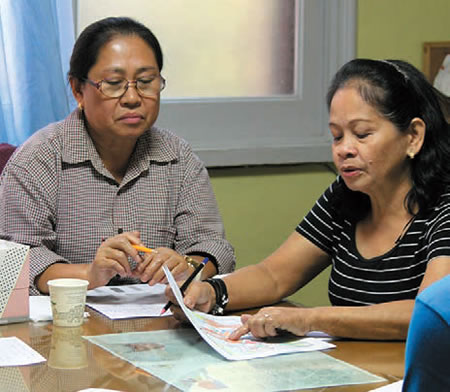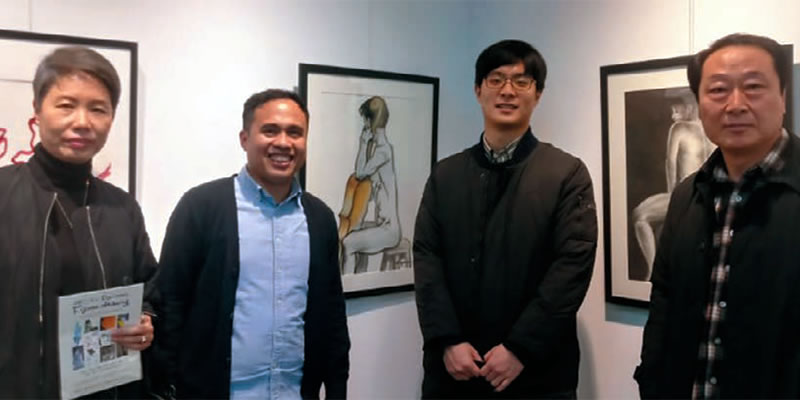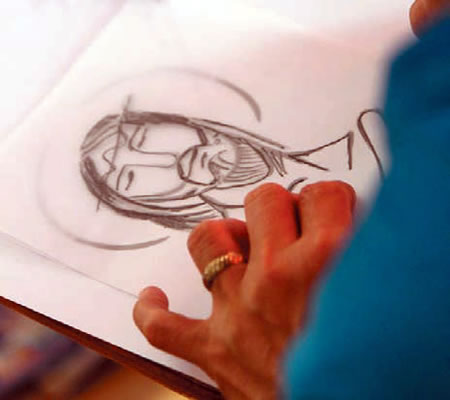
Art is the Work of the Spirit
In his well-received book, The Gospel of Joy, Pope Francis writes: “Each particular Church should encourage the use of the arts in evangelization, building on the treasures of the past but also drawing upon the wide variety of contemporary expressions so as to transmit the faith in a new ‘language of parables.’ We must be bold enough to discover new signs and new symbols, new flesh to embody and communicate the word, and different forms of beauty which are valued in different cultural settings, including those unconventional modes of beauty which may mean little to the evangelizers, yet prove particularly attractive for others.”

With the local Korean Catholic Church very much alive and capable of accompanying the faith of the local community through parish ministry, what can a foreign ordained Columban contribute that is not only redundant but is also crossing an unfamiliar field of doing mission?
After my ordination in January 2015, I came to Korea and worked in two Korean parishes as curate in Jeju Island while at the same time assisting the diocese-based migrant center. However, a year and a half later, a shift in my ministerial engagement took place, a shift to what I coined “art ministry.” What is this kind of ministry? How do you do it? Some Korean faithful told me it was their first time to hear such a name for ministry. I can only explain it through concrete application.
In September 2018, I marked my first public ministry with visual arts through a day-long art recollection I facilitated with the Seoul Filipino Catholic Community. And that public ministry was not the last. It was followed by facilitating more recollection events with the same model and approach not only with other migrant communities in Korea but also in our Formation House in Seoul with Columban seminarian students.
Art recollection, overall, is praying, reflecting and meditating through drawing and painting as well as visual art appreciation, among many others. In this approach, Christians are not only able to experience other creative and non-conventional ways of reflecting on their faith but also to learn something about themselves and God through the arts.

As I explored various channels to engage art ministry, I came to a few realizations. First, my service to the Columban community is not limited only to my region of assignment but also can extend through other regions/ mission units. In the Korea Region Mission Magazine, we developed an art page where I contribute my own artwork and a really short, written reflection on the artwork. Readers have given us feedback that the art page is like a space where they can rest from words and relax while contemplating the artwork; it’s bringing an art gallery to the magazine.
Likewise, I was also able to do the artwork for the cover page of the book on the life of Columban Fr. Rufus Haley initiated by Columban publication in Philippine region.
Secondly, visual art reaches out and provides for the needs of other communities and organization. The most recent one is working with Transparency International Korea on a project related to Environmental Issues and Climate Change. Climate justice is one of the areas that we promote in our Justice, Peace and Integrity of Creation ministry. Visual art has become a tool to connect with other institutions where we as Columbans also channel our priorities in ministry.
 Thirdly, visual art is able to create a new and different space of encounter for Columban missionaries and the people in the secular society. When I joined a public exhibit in Seoul with other artists, I invited fellow Columbans to the art galleries. Other artists were able to meet Columban missionaries and have an exchange of conversation. People may find the experience of meeting religious missionaries memorable since the encounter is not in a religious gathering hall like a church or temple. The encounter may only be once, however, who knows how the meeting might change the lives of people? Isn’t it that’s how the parable of the sower works?
Thirdly, visual art is able to create a new and different space of encounter for Columban missionaries and the people in the secular society. When I joined a public exhibit in Seoul with other artists, I invited fellow Columbans to the art galleries. Other artists were able to meet Columban missionaries and have an exchange of conversation. People may find the experience of meeting religious missionaries memorable since the encounter is not in a religious gathering hall like a church or temple. The encounter may only be once, however, who knows how the meeting might change the lives of people? Isn’t it that’s how the parable of the sower works?
Lastly, visual art works with time and history to express thoughts, sentiments and principles of people as they experience crucial events. In this time of the coronavirus pandemic where people are locked down or quarantined in their own houses, art has provided them relief, comfort, solace and hope. In Korea, we have come up with a children’s coloring book where participants can express their various emotions through colors while at the same time saying a creative “thank you” to COVID-19 first responders. Photos of artwork are shared on social media. This initiative allowed us as a church and missionary society to be one with the wider suffering world.
This article, however long, may be not enough to explain in detail how visual art has become a direct channel in my present ministerial engagement as a Columban. However, exploration and the active finding of new ways of engaging in mission has proven that art has been able to minister to people in many creative ways. Art is the work of the Spirit; it mirrors a reflection of our first and ultimate Creator. When we become artistic and creative in ministry, we concretely live out the image of the One who created us. And we preach the Gospel of Joy!
Columban Fr. Jason Antiquera lives and works in south Korea.


 The Columbans are a society of missionaries, including priests and lay people, who minister to people of various cultures as a way of witnessing to the universal love of God.
The Columbans are a society of missionaries, including priests and lay people, who minister to people of various cultures as a way of witnessing to the universal love of God.